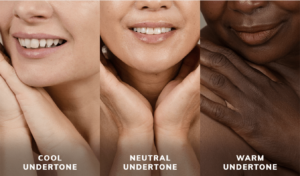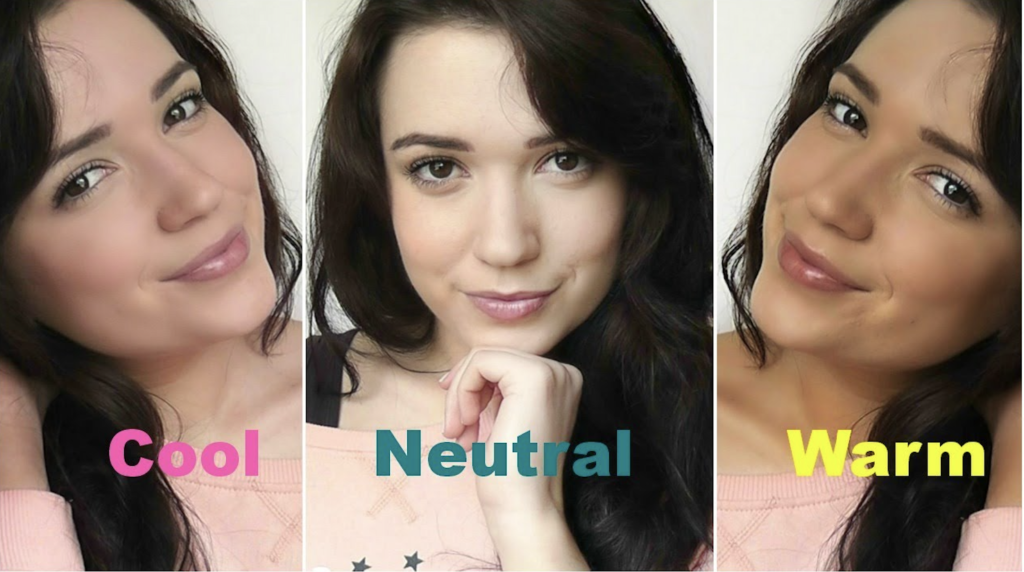Have you ever tried a new makeup look, only to find that the colors just don’t work for you? Or have you been searching for the perfect hair color, but can’t seem to find one that complements your skin? Understanding your skin tone and undertone can help solve these problems and more.
In this comprehensive guide, we will explore everything you need to know about your skin tone and undertone, including how to identify them, what colors work best for each, and tips for finding the perfect makeup, hair, and clothing colors.
Introduction
Your skin tone and undertone are two essential elements that impact how you look in different colors. Skin tone refers to the color of your skin, while undertone refers to the color that lies beneath the surface of your skin. Understanding both can help you choose colors that complement your natural beauty and enhance your overall appearance.
What is Skin Tone?
Skin tone refers to the color of your skin, which is determined by the amount of melanin in your skin. Melanin is a pigment that gives skin its color, and the more melanin you have, the darker your skin tone. Skin tone can range from very light to very dark and everything in between.
Understanding Your Skin Tone and Undertone
Your skin’s undertone is the subtle color that lies beneath the surface of your skin. Understanding your undertone is essential because it can help you choose colors that complement your skin and enhance your overall look.
How to Identify Your Skin Tone and Undertone
There are a few different methods to determine your skin tone and undertone.
The Vein Test
One way to identify your undertone is to look at the veins on the inside of your wrist. If your veins appear blue or purple, you likely have a cool undertone. If your veins appear green, you likely have a warm undertone. If you can’t tell if your veins are blue or green, you may have a neutral undertone.
The Jewelry Test
Another method is to try on different jewelry colors. If gold jewelry looks best on you, you likely have a warm undertone. If silver jewelry looks best, you likely have a cool undertone. If both gold and silver look equally good, you likely have a neutral undertone.
The White Test
The white test involves holding a piece of white fabric up to your face in natural light. If your skin appears yellow or sallow, you likely have a warm undertone. If your skin appears pink or rosy, you likely have a cool undertone. If your skin appears gray or ashen, you likely have a neutral undertone.
Skin Tone Categories
There are four primary categories of skin tone: fair, medium, olive, and dark. Within each category, there are also subcategories based on undertones.
Fair Skin
Fair skin has little to no melanin and often burns easily in the sun. People with fair skin typically have cool undertones.
- Cool undertones: Look for colors that have blue, pink, or red undertones.
- Warm undertones: Avoid colors that have yellow, orange, or golden undertones.
Medium Skin
Medium skin has a moderate amount of melanin and may tan easily in the sun. People with medium skin can have cool, warm, or neutral undertones.
- Cool undertones: Look for colors that have blue or pink undertones.
- Warm undertones: Look for colors that have golden or yellow undertones.
- Neutral undertones: Look for colors that have a balance of warm and cool undertones.

Olive Skin
Olive skin has a higher concentration of melanin, which can range from light to dark. People with olive skin typically have warm or neutral undertones.
- Warm undertones: Look for colors that have golden or yellow undertones.
- Neutral undertones: Look for colors that have a balance of warm and cool undertones.
Dark Skin
Dark skin has the highest concentration of melanin and rarely burns in the sun. People with dark skin can have cool, warm, or neutral undertones.
- Cool undertones: Look for colors that have blue or pink undertones.
- Warm undertones: Look for colors that have golden or yellow undertones.
- Neutral undertones: Look for colors that have a balance of warm and cool undertones.
How to Find the Right Makeup Shades
Choosing the right makeup shades can be challenging, especially if you don’t know your skin tone and undertone. Here are some tips to help you find the perfect shades:
- Foundation: Choose a foundation that matches your skin tone and undertone. If you have warm undertones, look for foundations that have yellow or golden undertones. If you have cool undertones, look for foundations that have pink or red undertones. If you have neutral undertones, look for foundations that have a balance of warm and cool undertones.
- Blush: Choose a blush shade that complements your skin tone and undertone. If you have warm undertones, look for blushes that have peach or coral undertones. If you have cool undertones, look for blushes that have pink or red undertones. If you have neutral undertones, look for blushes that have a balance of warm and cool undertones.
- Lipstick: Choose a lipstick shade that complements your skin tone and undertone. If you have warm undertones, look for lipsticks that have warm, earthy tones, such as copper or terracotta. If you have cool undertones, look for lipsticks that have blue or pink undertones. If you have neutral undertones, look for lipsticks that have a balance of warm and cool undertones.
How to Find the Right Hair Color
Choosing the right hair color can also be challenging if you don’t know your skin tone and undertone. Here are some tips to help you find the perfect hair color:
- Warm Undertones: Look for hair colors that have warm, golden or honey tones, such as caramel, copper, or bronze.
- Cool Undertones: Look for hair colors that have cool, ashy tones, such as platinum, silver, or champagne.
- Neutral Undertones: Look for hair colors that have a balance of warm and cool tones, such as beige or natural brown.
How to Find the Right Clothing Colors
Choosing the right clothing colors can help you look your best and enhance your natural beauty. Here are some tips to help you find the perfect clothing colors:
- Warm Undertones: Look for clothing colors that have warm, earthy tones, such as camel, rust, or olive green.
- Cool Undertones: Look for clothing colors that have cool, jewel tones, such as emerald green, sapphire blue, or ruby red.
- Neutral Undertones: Look for clothing colors that have a balance of warm and cool tones, such as navy blue or charcoal gray.
Read also Bridal Makeup Tips for Dry Skin: Flawless and Radiant Look
FAQs
Q: Can my skin tone change over time?
A: Yes, your skin tone can change due to various factors, including sun exposure, aging, and skin conditions.
Q: How often should I get my skin tone reevaluated?
A: It’s a good idea to reevaluate your skin tone and undertone every few years, especially if you notice any changes in your skin or if you’re having difficulty finding the right makeup or clothing shades.
Q: How do I know if I have warm, cool, or neutral undertones?
A: There are a few ways to determine your undertone. One way is to look at the veins on your wrist. If they appear blue, you likely have cool undertones. If they appear green, you likely have warm undertones. If they appear a mix of blue and green, you likely have neutral undertones. Another way is to try on clothing or makeup shades in warm, cool, and neutral tones and see which ones look best on you.
Q: Can people with the same skin tone have different undertones?
A: Yes, people with the same skin tone can have different undertones. That’s why it’s important to determine your undertone in addition to your skin tone.
Q: How can I make my skin look more even and radiant?
A: Using skincare products that are appropriate for your skin type and concerns, such as a gentle cleanser, moisturizer, and sunscreen, can help improve the overall appearance of your skin. Additionally, using makeup products that match your skin tone and undertone can help create a more even and radiant complexion.
Q: What should I do if I’m still unsure about my skin tone and undertone?
A: If you’re still unsure about your skin tone and undertone, consider consulting with a makeup artist or skincare professional who can help determine your undertone and provide recommendations for makeup and skincare products that will work best for you.
Conclusion
Understanding your skin tone and undertone is essential when it comes to choosing the right makeup, clothing, and hair colors. By following the tips outlined in this article, you can easily determine your skin tone and undertone and find the perfect shades that will enhance your natural beauty. Don’t be afraid to experiment with different colors and shades to see what works best for you. Remember, the key to looking and feeling your best is to embrace and enhance your unique features.
So, take some time to get to know your skin tone and undertone, and enjoy the process of finding your perfect shades. You’ll be amazed at how much of a difference it can make in your overall appearance and confidence.
If you have any further questions or would like to share your own tips for understanding your skin tone and undertone, please feel free to leave a comment below.
